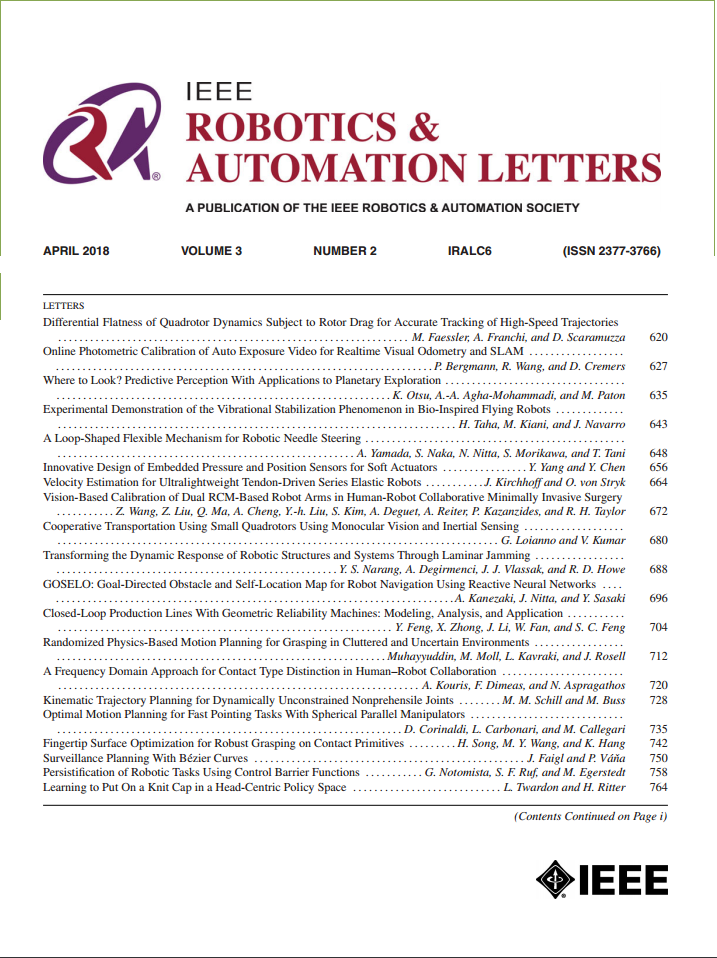通过控制势垒函数限制动能:分析与实验验证
IF 4.6
2区 计算机科学
Q2 ROBOTICS
引用次数: 0
摘要
在安全关键控制的背景下,我们提出并分析了控制障碍函数(cbf)的使用来限制力矩控制机器人的动能。所提出的方案能够以微创方式修改标称控制动作,以达到所需的动能极限。我们展示了如何通过在潜在的机器人动力学中适当地注入阻尼而独立于标称控制器结构来实现这种安全条件。我们在一个7自由度(DoF) Franka Emika Panda机器人上对该方法进行了广泛的实验验证。结果表明,该方法提供了一种有效的、微创的安全层,易于实现,并且在实际实验中具有鲁棒性。本文章由计算机程序翻译,如有差异,请以英文原文为准。
Limiting Kinetic Energy Through Control Barrier Functions: Analysis and Experimental Validation
In the context of safety-critical control, we propose and analyse the use of Control Barrier Functions (CBFs) to limit the kinetic energy of torque-controlled robots. The proposed scheme is able to modify a nominal control action in a minimally invasive manner to achieve the desired kinetic energy limit. We show how this safety condition is achieved by appropriately injecting damping in the underlying robot dynamics independently of the nominal controller structure. We present an extensive experimental validation of the approach on a 7-Degree of Freedom (DoF) Franka Emika Panda robot. The results demonstrate that this approach provides an effective, minimally invasive safety layer that is straightforward to implement and is robust in real experiments.
求助全文
通过发布文献求助,成功后即可免费获取论文全文。
去求助
来源期刊

IEEE Robotics and Automation Letters
Computer Science-Computer Science Applications
CiteScore
9.60
自引率
15.40%
发文量
1428
期刊介绍:
The scope of this journal is to publish peer-reviewed articles that provide a timely and concise account of innovative research ideas and application results, reporting significant theoretical findings and application case studies in areas of robotics and automation.
 求助内容:
求助内容: 应助结果提醒方式:
应助结果提醒方式:


